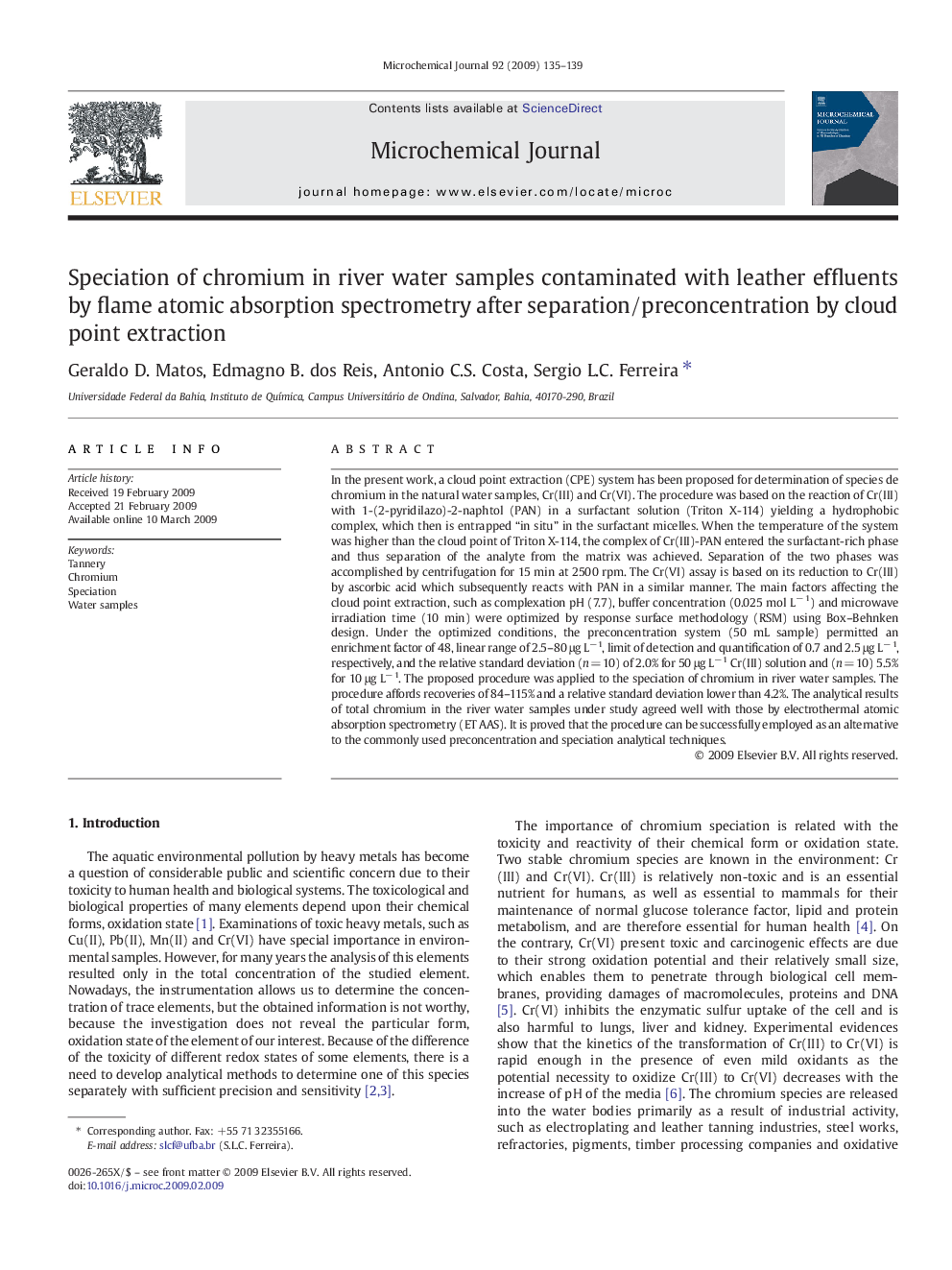| Article ID | Journal | Published Year | Pages | File Type |
|---|---|---|---|---|
| 1228006 | Microchemical Journal | 2009 | 5 Pages |
In the present work, a cloud point extraction (CPE) system has been proposed for determination of species de chromium in the natural water samples, Cr(III) and Cr(VI). The procedure was based on the reaction of Cr(III) with 1-(2-pyridilazo)-2-naphtol (PAN) in a surfactant solution (Triton X-114) yielding a hydrophobic complex, which then is entrapped “in situ” in the surfactant micelles. When the temperature of the system was higher than the cloud point of Triton X-114, the complex of Cr(III)-PAN entered the surfactant-rich phase and thus separation of the analyte from the matrix was achieved. Separation of the two phases was accomplished by centrifugation for 15 min at 2500 rpm. The Cr(VI) assay is based on its reduction to Cr(III) by ascorbic acid which subsequently reacts with PAN in a similar manner. The main factors affecting the cloud point extraction, such as complexation pH (7.7), buffer concentration (0.025 mol L− 1) and microwave irradiation time (10 min) were optimized by response surface methodology (RSM) using Box–Behnken design. Under the optimized conditions, the preconcentration system (50 mL sample) permitted an enrichment factor of 48, linear range of 2.5–80 μg L− 1, limit of detection and quantification of 0.7 and 2.5 μg L− 1, respectively, and the relative standard deviation (n = 10) of 2.0% for 50 μg L− 1 Cr(III) solution and (n = 10) 5.5% for 10 μg L− 1. The proposed procedure was applied to the speciation of chromium in river water samples. The procedure affords recoveries of 84–115% and a relative standard deviation lower than 4.2%. The analytical results of total chromium in the river water samples under study agreed well with those by electrothermal atomic absorption spectrometry (ET AAS). It is proved that the procedure can be successfully employed as an alternative to the commonly used preconcentration and speciation analytical techniques.
